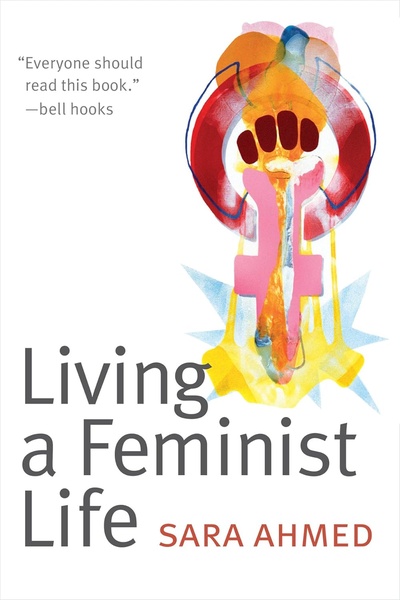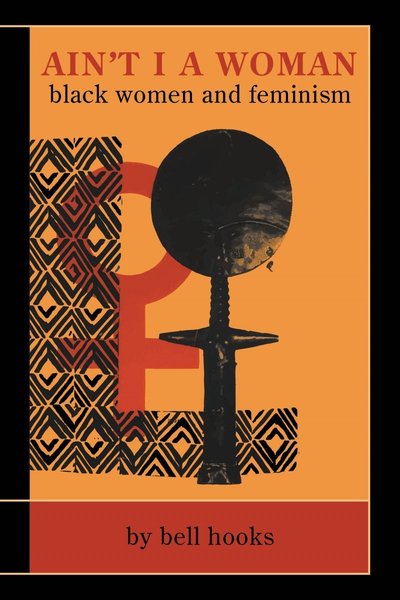Living a Feminist Life
Explores how to practice feminism in daily life, analyzing the joys and struggles of being a feminist, and introduces the concept of a feminist survival kit.

📝 Book Review
“Living a Feminist Life” is an important work by British scholar Sara Ahmed that uniquely combines feminist theory with daily life practice, providing readers with a completely new framework for understanding how feminism operates at the personal level. Through profound theoretical insights and detailed analysis of personal experiences, Ahmed creates a feminist life guide that is both academically rigorous and practically instructive.
One of Ahmed’s most striking contributions in the book is her in-depth analysis of the “feminist killjoy” figure. She keenly observes that when feminists point out gender injustice phenomena in various social situations, they are often labeled as “killjoys,” as if their very existence threatens harmonious atmospheres. Ahmed profoundly explores the social psychological mechanisms behind this phenomenon, revealing the enormous social pressure and emotional costs faced when pointing out gender inequality.
She argues that this labeling is not only an attack on feminists personally but also a strategy for maintaining existing power structures. By portraying critics as disruptors, society avoids deep reflection on structural inequalities. The “feminist killjoy” becomes a way to dismiss legitimate concerns about injustice while preserving the appearance of social harmony.
The Concept of “Willful Paths”
In theoretical construction, Ahmed proposes the highly insightful concept of “willful paths,” which profoundly explains how social expectations shape our life trajectories like invisible roads. She points out that society presets different life paths for individuals of different genders—these paths appear natural but are actually products of social construction.
More importantly, Ahmed analyzes in detail the enormous effort and costs required to deviate from these predetermined paths. Individuals who choose different roads often need to face multiple resistances from family, society, and institutions. This resistance is manifested not only in external obstacles but also profoundly affects individuals’ inner worlds and self-perception.
The concept of “willful paths” reveals how deviation from normative expectations requires not just individual courage but sustained effort against institutional and social pressures that constantly try to redirect individuals back to conventional routes. Those who persist in alternative paths often pay significant personal and professional costs while simultaneously creating possibilities for others to follow.
Feminist Snapshots and Lived Experience
Ahmed’s unique analytical method is embodied in her use of “feminist snapshots,” skillfully combining personal experiences with theoretical analysis through a series of vivid life fragments that show moments and processes of feminist awakening. These snapshots not only have strong personal coloring but more importantly reveal how feminist consciousness emerges and develops in the subtle moments of daily life.
Through this method, Ahmed successfully transforms abstract theoretical concepts into concrete, tangible life experiences, enabling readers to understand more deeply that feminism is not only a political stance but also a lifestyle and state of being. These snapshots demonstrate how feminist consciousness can emerge from ordinary encounters—a moment of recognition when facing discrimination, the discomfort of being asked to smile, the realization of how certain spaces exclude certain bodies.
The power of this approach lies in its ability to show that feminist politics begin with personal experience while connecting individual experiences to broader patterns of structural oppression. Each snapshot becomes both deeply personal and inherently political, demonstrating how the personal is indeed political.
The Feminist Survival Kit
At the practical level, Ahmed provides readers with a carefully designed “feminist survival kit” at the book’s conclusion, which embodies her profound understanding of feminist practice. She emphasizes the importance of building support networks, believing that feminists need to seek and create communities that can understand and support them. Such networks provide not only emotional support but also important foundations for political action.
She reconceptualizes self-care as a political practice, challenging traditional notions that view self-care as individualistic behavior, instead understanding it as a necessary strategy for maintaining resistance capacity in oppressive environments. Ahmed details how self-care becomes a form of resistance when practiced by those whom society seeks to exhaust and discourage.
Additionally, Ahmed discusses in detail strategies for creating feminist spaces and concrete methods for dealing with setbacks and exhaustion, providing practical guidance for feminist practitioners. This includes advice on how to handle backlash, how to maintain energy for long-term struggle, and how to create sustainable practices of resistance.
Daily Resistance and Microactivism
Ahmed’s exploration of daily resistance has particular importance. She analyzes in detail how feminists conduct effective resistance at various levels of daily life. This resistance includes refusing demands that appear reasonable but actually reinforce gender inequality, insisting on using language expressions that accommodate diverse identities, bravely challenging various microaggression behaviors, and working to create alternative lifestyles that align with feminist values.
Ahmed emphasizes that these seemingly minor daily behaviors actually have profound political significance. They are not only manifestations of personal choice but also continuous challenges to and transformation of existing social orders. Daily resistance becomes a way of living politically, of making every interaction an opportunity to challenge and change oppressive norms.
This focus on daily resistance acknowledges that not everyone can engage in large-scale political activism but that everyone can practice feminism through how they choose to live, speak, and interact with others. It democratizes feminist practice while acknowledging the accumulative power of small acts of resistance.
Theoretical Contributions to Multiple Fields
In terms of theoretical contributions, Ahmed’s work significantly advances several important academic fields. She develops a theoretical framework about emotional politics, profoundly analyzing how emotions play roles in maintaining and challenging power relationships. Her critical analysis of diversity work reveals how institutions use surface diversity initiatives to mask deeper structural problems.
More importantly, she successfully connects personal experience with structural oppression, providing new theoretical tools for understanding the relationship between individual pain and social injustice. Her work also significantly advances the development of queer phenomenology, providing important theoretical resources for understanding the experiential dimensions of sexual orientation and gender identity.
Ahmed’s theoretical innovation lies in her ability to bridge the gap between lived experience and academic theory, making complex concepts accessible while maintaining analytical rigor. Her work demonstrates how feminist theory can emerge from and speak to lived experience rather than remaining abstract and removed from daily life.
Affective Politics and Institutional Resistance
A crucial aspect of Ahmed’s analysis concerns how institutions manage and manipulate emotions to maintain existing power structures. She explores how happiness, anger, and other emotions are regulated and policed, particularly how women and people of color are expected to manage their emotions in ways that maintain institutional comfort.
Ahmed’s concept of “affective politics” reveals how power operates through the management of feeling. She shows how institutions present themselves as committed to equality while creating conditions that make equality impossible, then blaming individuals for their negative emotional responses to these conditions.
This analysis provides crucial insights into how institutional oppression operates not just through formal policies but through the everyday emotional labor expected from marginalized individuals. It explains why pointing out injustice often results in being labeled as the problem rather than addressing the injustice itself.
Diversity Work and Institutional Critique
Ahmed’s critique of “diversity work” offers important insights into how institutions co-opt the language of equality while maintaining inequitable structures. She analyzes how diversity becomes a form of institutional performance that allows organizations to appear committed to justice while avoiding substantive change.
Through her analysis, Ahmed reveals how diversity work often places the burden of change on those who experience discrimination rather than on institutions that perpetuate it. She shows how diversity initiatives can become ways of managing complaints about inequality rather than addressing its root causes.
This institutional critique provides essential tools for understanding why progress toward equality often feels slow or superficial, and offers strategies for more effective approaches to creating genuine institutional change.
Implications for Contemporary Feminist Practice
This book has profound guiding significance and inspirational value for contemporary feminist practice. Ahmed’s analysis not only validates the complex emotional experiences of feminists in daily life, helping those who feel isolated and frustrated realize that their experiences have universality and political significance.
She also provides concrete strategies and methods for dealing with various forms of institutional resistance, helping feminists better cope with challenges from institutional, social, and interpersonal levels. At the same time, Ahmed emphasizes the importance of collective action, encouraging feminists to build alliances and support networks to promote social change through collective strength.
Finally, she actively encourages creative feminist practices, inspiring readers to explore new forms of resistance and lifestyles, injecting new vitality and possibilities into feminist movements. The book offers practical wisdom for sustaining feminist commitments over time and through difficulty.
Phenomenological Approach to Feminist Theory
Ahmed’s phenomenological approach—focusing on how feminist consciousness emerges through lived experience—offers a distinctive contribution to feminist theory. Rather than beginning with abstract principles, she examines how feminist awareness develops through encounters with injustice, discrimination, and resistance.
This approach makes feminist theory more accessible to those who may not have academic training but who recognize their own experiences in Ahmed’s descriptions. It also provides validation for the emotional and physical responses that often accompany feminist awakening, normalizing the discomfort and anger that can arise from recognizing oppression.
The phenomenological approach also emphasizes the embodied nature of feminist knowledge—how understanding develops not just intellectually but through physical and emotional experience of living in gendered bodies in gendered worlds.
Building Feminist Communities
Throughout the book, Ahmed emphasizes the crucial importance of feminist community-building. She argues that living a feminist life requires finding others who share similar commitments and who can provide support during difficult moments. These communities become essential for sustaining feminist practice over time.
Ahmed’s vision of feminist community goes beyond simple solidarity to include practical support for daily resistance. She envisions communities that can help members navigate difficult workplace situations, process experiences of discrimination, and maintain hope in the face of institutional intransigence.
The emphasis on community also acknowledges that individual resistance, while important, is not sufficient for creating broad social change. Collective action and mutual support become essential components of effective feminist practice.
Conclusion: A Practical Philosophy for Feminist Living
“Living a Feminist Life” serves as an exemplary combination of theory and practice, providing valuable guidance for all who hope to practice feminism in their lives. Ahmed’s work demonstrates that feminist theory need not be removed from daily experience but can emerge from and speak directly to the challenges of living as feminists in non-feminist worlds.
The book’s lasting contribution lies in its practical philosophy for feminist living—its demonstration that feminism is not just an intellectual commitment but a way of being in the world that requires ongoing attention, effort, and community support. Ahmed shows that living a feminist life is both deeply personal and inherently political, requiring both individual courage and collective solidarity.
Through her analysis of the feminist killjoy, willful paths, and the feminist survival kit, Ahmed provides tools not just for understanding how oppression operates but for developing sustainable practices of resistance. Her work offers hope that another world is possible while acknowledging the real costs and difficulties of working toward that world.
“Living a Feminist Life” ultimately argues that feminism is not a destination but a practice—an ongoing commitment to justice that must be renewed daily through how we choose to live, love, and resist. It provides both theoretical understanding and practical wisdom for this lifelong practice of feminist living.
Discussion
读书讨论
分享您对这本书的感想和看法,与其他读者交流见解
加入讨论
分享您对这本书的感想和看法,与其他读者交流见解
加载评论中...
Book Info
Related Topics
🛒 Get This Book
 Buy on Amazon
Buy on Amazon Related Books
读书讨论
分享您对这本书的感想和看法,与其他读者交流见解
加入讨论
分享您对这本书的感想和看法,与其他读者交流见解
加载评论中...

